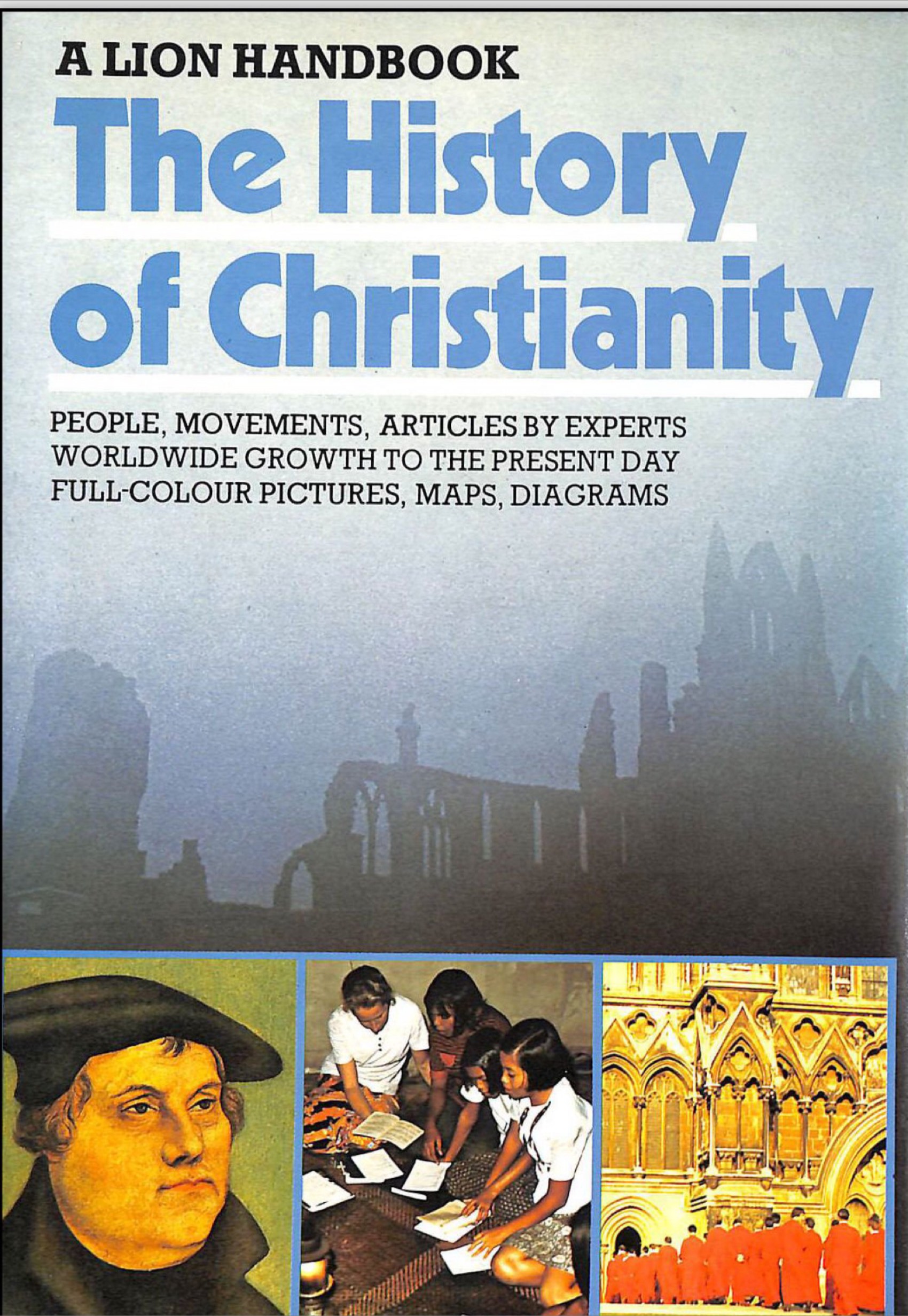A LION HANDBOOK (THE HISTORY OF CHRISTIANITY)
Here is a summary of The History of Christianity (A Lion Handbook) by Tim Dowley (and later revised editions)
---
Overview & Purpose
This book is designed as a concise, readable, and illustrated handbook on the history of Christianity — its origins, development, diversities, and global influence.
It belongs to the “Lion Handbook” series, which aims to present foundational Christian topics in accessible form.
Later editions (such as Introduction to the History of Christianity) have been revised, re-illustrated and enlarged, adding maps, study questions, new contributors, and updated content.
---
Structure & Content
The book is organized roughly in chronological order, tracing Christianity from its roots to modern times. Major themes and sections include:
1. Origins and Early Christianity
* Background in Judaism, the life and teachings of Jesus
* The spread of Christianity through missionary work (e.g. Paul)
* Persecutions, martyrdom, and the formation of the early church
2. Church in the Roman Empire & Late Antiquity
* Constantine and the conversion of the empire
* Councils (e.g. Nicaea), creeds, theological controversies (e.g. Arianism)
* The rise of monasticism
3. Medieval Christianity
* The role of the Church in medieval Europe
* The papacy, monastic movements, scholasticism
* The East–West split (Orthodox vs. Western Christianity)
4. Reformation and Post-Reformation
* Martin Luther, John Calvin, the Protestant Reformation
* Catholic Counter-Reformation
* Confessional divisions, wars of religion
5. Christianity in the Modern Era
* Enlightenment, science, secular challenges
* Missions and global expansion (Africa, Asia, Latin America)
* Modern theological movements, ecumenism, social issues
6. Contemporary Christianity & Challenges
* Growth of Christianity in the Global South
* Interplay with culture, politics, pluralism
* Issues like secularism, religious pluralism, internal reforms
In addition to the narrative history, the book includes thematic essays or side articles on important topics (e.g. ethics, spirituality, theology, art, society) to give more depth in particular areas. (This is a feature in many “handbook” style Christian histories.)
Maps, illustrations, timelines and study aids help situate historical events and make the material more accessible.
---
Key Themes & Insights
Continuity and Change: The book emphasizes how Christian institutions, doctrines, and practices have both persisted and adapted over time in response to cultural, political, and intellectual challenges.
Diversity: It shows the rich diversity within Christianity — theological, liturgical, cultural, denominational — and how that diversity developed.
Interaction with Culture & Society: The narrative frequently highlights how Christianity has shaped, and been shaped by, broader social, political, and intellectual currents (e.g. philosophy, science, empire).
Globalization of Christianity: One recurring point is the shift from Christianity as a primarily Western religion to one with a large presence in Africa, Asia, and Latin America.
Challenges and Adaptation: The book does not shy away from the internal challenges (schisms, reform movements, theological disputes) and external pressures (secularism, religious pluralism) the church has faced.

